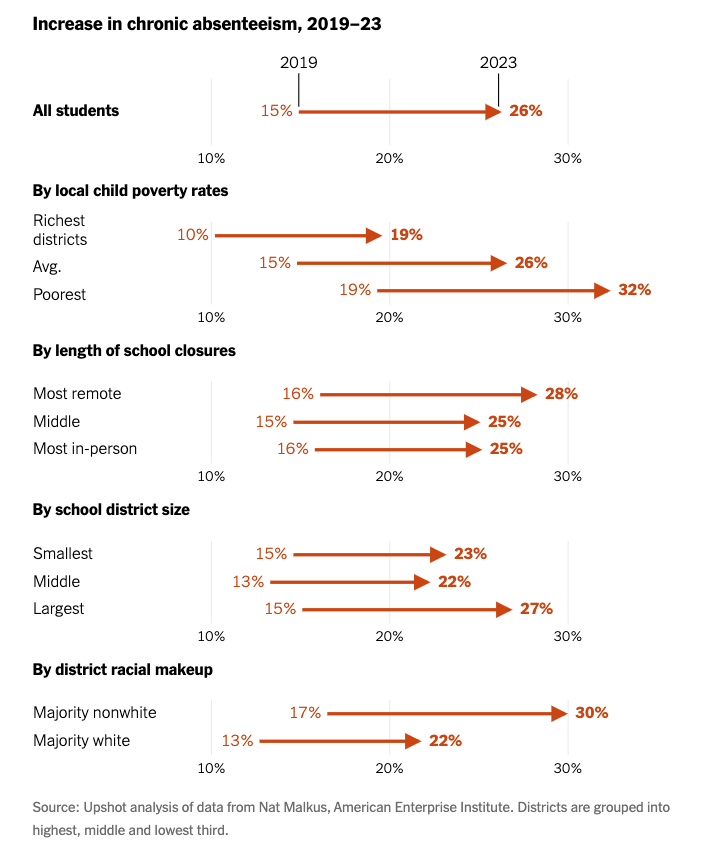
In Anchorage, affluent families set off on ski trips and other lengthy vacations, with the assumption that their children can keep up with schoolwork online.
In a working-class pocket of Michigan, school administrators have tried almost everything, including pajama day, to boost student attendance.
And across the country, students with heightened anxiety are opting to stay home rather than face the classroom.
In the four years since the pandemic closed schools, U.S. education has struggled to recover on a number of fronts, from learning loss, to enrollment, to student behavior.
But perhaps no issue has been as stubborn and pervasive as a sharp increase in student absenteeism, a problem that cuts across demographics and has continued long after schools reopened.
Nationally, an estimated 26 percent of public school students were considered chronically absent last school year, up from 15 percent before the pandemic, according to the most recent data, from 40 states and Washington, D.C., compiled by the conservative-leaning American Enterprise Institute. Chronic absence is typically defined as missing at least 10 percent of the school year, or about 18 days, for […]









As the article states: “The habit of daily attendance — and many families’ trust — was severed when schools shuttered in spring 2020. Even after schools reopened, things hardly snapped back to normal. Districts offered remote options, required Covid-19 quarantines and relaxed policies around attendance and grading.” How the elites managed COVID will be considered a disaster when examined from a historical perspective. The population learned how little was actually occurring in school. We have learned to ask ourselves “Why are we paying this much in taxes for so little of substance?”. We have also learned that the patter of fear generated by the authorities was not true. The American population is slowly learning to lose its fear. This is a wonderful thing for the general public but will spark dread in the elites who have ruled with fear for decades. The response, no doubt, will be increased repression. One of the few tools left to the bankrupt ruling class. The fact is, learning can and mostly does occur outside of the structured classroom setting. Although some will be harmed by increased truancy, others will prosper. Yes, the culture is changing. The question is: Will the elites be willing to embrace truth and accountability for themselves? To do so will result in systemic structural change but also a virtuous cycle of trust. To fail to do so will continue the non-virtuous cycle of distrust which has accelerated since 9/11.